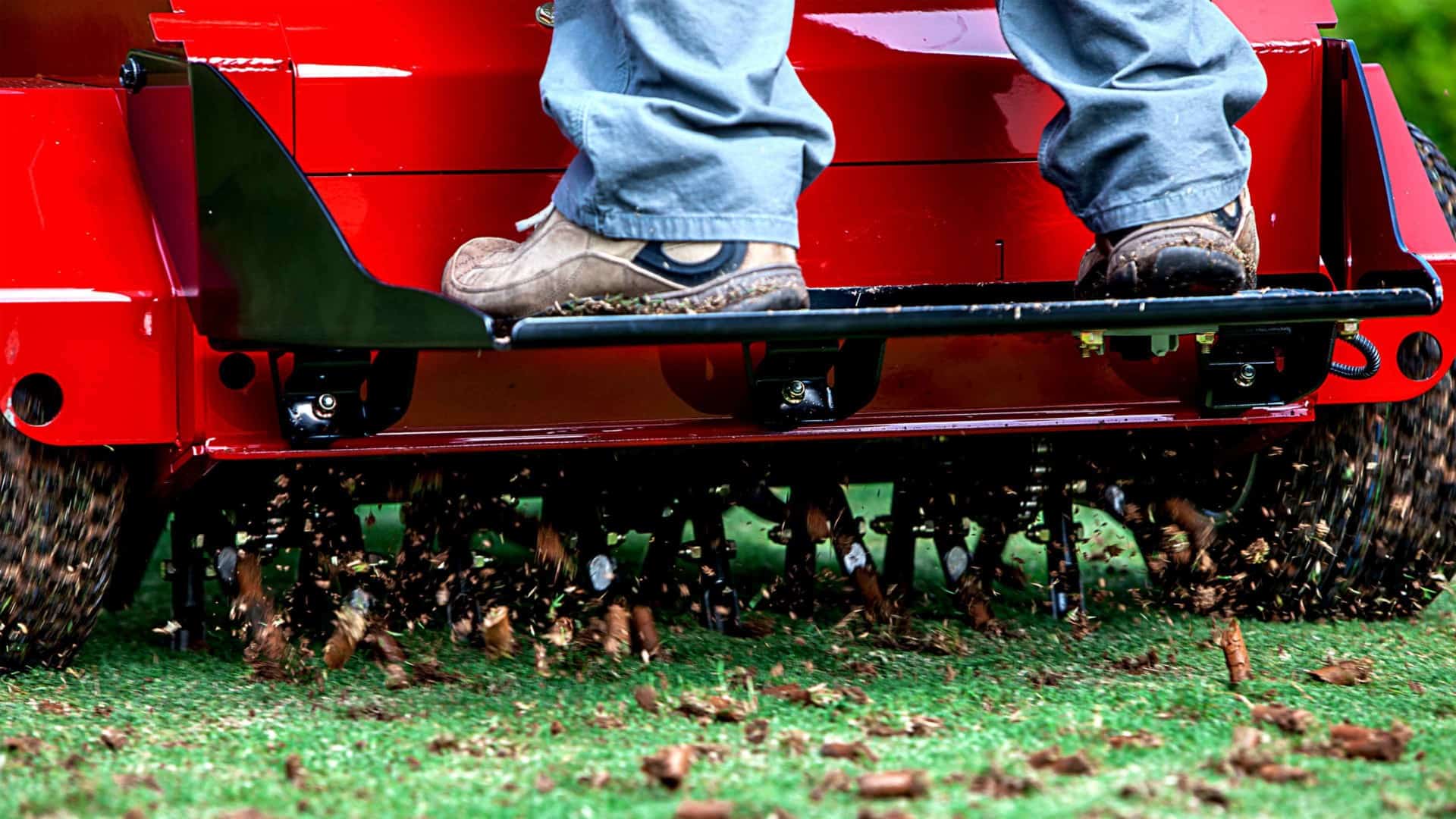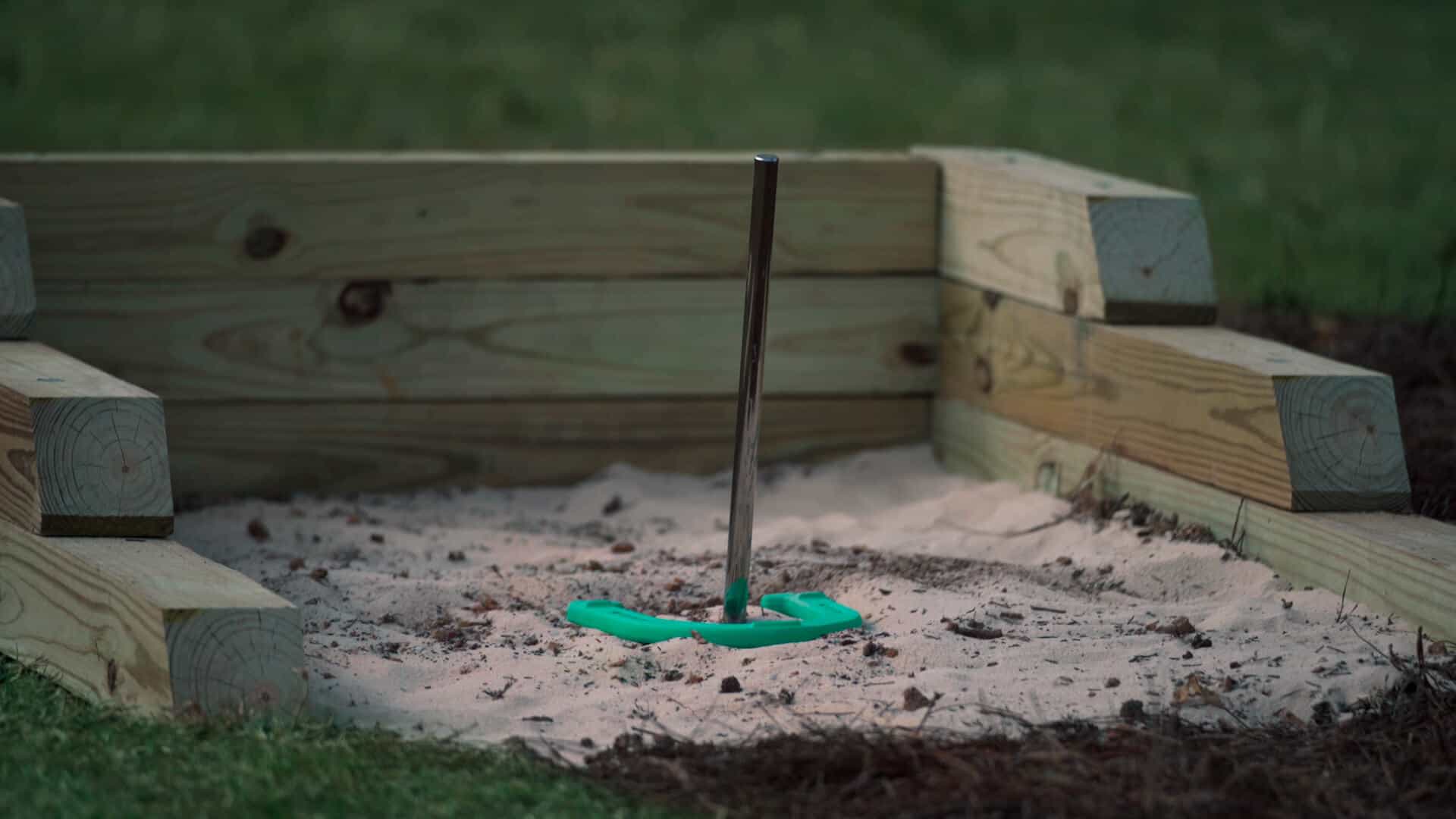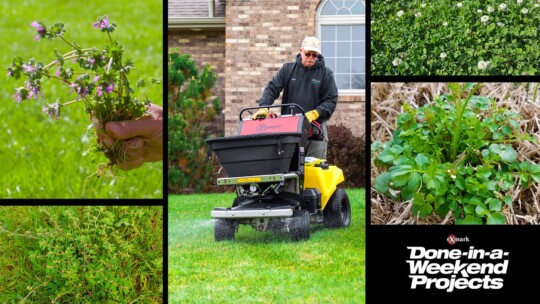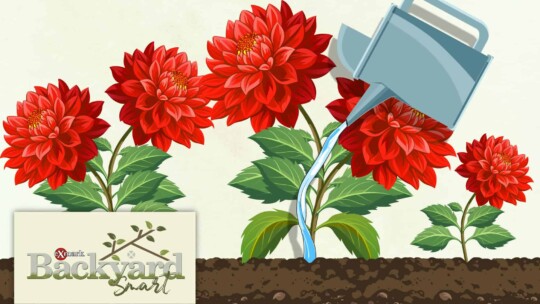Some folks out there take grass for granted. It might seem like you put in hard work, let it do hard work, and then mow and that’s it! But sometimes it’s a little more complicated than that. If you’re dealing with grass that just won’t grow, don’t worry! This list of landscaping issues and their solutions can help you have the lawn you’ve always wanted.
Pro tip: before you begin, double-check, and make sure your grass isn’t dormant. Give it a good tug. If it comes out easily, it’s dead. If it gives resistance, it’s likely just dormant.
Problem: Compacted Soil
Over time, soil can become compacted. Soil compaction can prevent airflow and proper drainage in your landscaping. This is typically due to the foot traffic you want your lawn to get, like kids running around or a big party happening on the lawn. But compacted soil can be bad for the growth of your grass. Sure signs that you’re dealing with compacted soil are that it’s hard to dig, there’s slow drainage in low areas, even after a light rain, and high runoff. To check the compaction of your soil, drive a screwdriver into your lawn. If it doesn’t go in easily, you need to bring out your aerator!
Solution: Aeration
The goal of aeration is to improve oxygen, nutrient, and water uptake by your lawn’s roots. This leads to stronger, thicker grass growth. You can use a variety of methods for taking care of your aeration needs including using Exmark’s Z Turf Z-Aerate 30 or, if you’re looking for something more budget conscious, you can purchase a core aerator that works by rolling across your turf for simple and quick aeration.

Problem: Water
If you’ve got bare spots on your lawn, you could be over- or under-watering it. There are a few things to take into consideration when you’re watering your grass. Different grass types are going to need different watering schedules and different amounts of water, so be sure you know what variety of grass you’re landscaping with and pay attention to what season you’re in. Knowing how much and how often to water is crucial.
Solution: It depends!
If you’ve got a problem with drainage in your outdoor space, consider building a dry creek bed. A dry creek bed is a simple DIY landscaping idea that consists of a gully or trench that’s usually lined with stones and edged with plants. Everything is designed to mimic a natural wetlands area. You could also try a rain garden, commonly used by landscape professionals if you have a problem managing stormwater runoff. These gardens are simple to create, beautiful to look at, and a great way to handle the extra water that storms bring so you can have greener grass and no more bare spots.
If the problem is under-watering, try setting up a sprinkler system that works on a timer.

Problem: Cutting
Sometimes the problem is how you’re cutting your grass. If you cut your grass too often, not enough, too high, too low, or any other number of potential issues, you can leave your grass with bare spots everywhere. What size mower you have, what kind of mower you have, and the height of your mower deck all impact your cut-quality as well.
Solution: Mow Properly
Consider the height of your mower deck. Mowing at the right height ensures that your grass is getting a clean, healthy cut every time. The height of the blades are part of the health determination of the overall grass.
Cut conservatively – no matter what season you should never cut more than 1/3 of the height of your grass while landscaping. You also want to ensure your blades are sharp at the beginning of every mowing season for the sharpest and cleanest cut. When it’s hot or dry, you’ll want to leave your grass taller, but in the spring or fall, you should cut it shorter.
Problem: Shade
Shade can be a real bummer and it’s not always avoidable. Whether you have trees that have taken over your lawn, you’re dealing with an invasive, vining plant, or you’ve got a fixture in place that prevents your grass from getting enough sun, shade is absolutely a destructive force working against your grass. But there are ways to fix that!
Solution: Adjust Your Landscaping
If you’re not able to cut down those troublesome trees or don’t want to, you might just want to embrace the shade. Consider building a pergola or other shade structure in your backyard so you can get the most out of the shade your yard is dealing with. You could also consider adding a little entertainment to your landscaping like a horseshoe pit, a sand table, or other backyard games to make the most of your shade because embracing the shade is all you can do. No grass types can thrive in shade.

Problem: pH Levels
You never know what’s going on in your soil, at least not chemically, and a chemical imbalance can lead to some serious problems including bare spots in your lawn. To be sure you don’t have a pH imbalance you’re going to want to test your soil.
Solution: Re-Calibrate
There are a few solutions to fixing the pH balance in your soil. You should consider your fertilizer usage. You might be over-fertilizing which isn’t great for your pH balance. But good news! It can be fixed! Step down, or eliminate your fertilizer usage or look at your fertilizer numbers and make sure you’re using what’s right for your soil. You could also consider liming your lawn. Lime brings balance back to overly acidic lawns to help encourage growth. Soil testing should include the amount of lime your lawn needs to flourish.
Problem: Disease
Your problem could be disease related. There are quite a few grass diseases that could be creating bare spots in your lawn such as:
- Brown patch: Usually attacks cool-season grasses and appears in the form of sunken, circular patches of tan, or dead, grass that can measure up to three feet in diameter.
- Large patch: A disease that latches on to warm-season grasses, large patch lives up to its name. It manifests in circular, discolored patches with an orange or yellow ring that measure from one to three feet in diameter. Another way to detect large patch is to pull on the affected grass and see if the shoots pull up easily.
- Dollar spot: This disease affects both warm- and cool-season grasses and gets its name because the infected area is roughly the size of a silver dollar (or, about two to six inches in diameter). The blades of grass infected by dollar spot look water-soaked and contain yellow spots that are ringed with a reddish-brown coloring.
- Gray leaf: Like dollar spot, this disease impacts warm- and cool-season grasses alike. It’s noticeable by tiny lesions on individual blades that spread into spots that eventually encompass the entire blade. These spots can be colored from tan to (mainly) gray and have tinier purple dots in them.
- Leaf spot: A warm-season grass disease, leaf spot first shows up in dark purple or black spots that eventually grow to have a tan center and surrounding yellow halo.
- Pythium blight: Another disease that impacts warm-season grasses, Pythium blight manifests itself through brown, grease-colored spots that measure about two centimeters to two inches in diameter. If left untreated, they can grow cotton candy-like fungus that helps spread the disease even further.
- Red thread: Early signs of red thread include circular- or oval-shaped patches on warm-season grasses that measure about two inches to three feet in diameter. These patches have a reddish-pink hue and usually start at the tip of the blade.
- Rust: In warm-season grasses, rust begins as tiny yellow spots that grow out into larger orange, red and brown circles. If touched, powdery, dust-like spores leap from the affected blade.
- Pink snow mold: Aptly named because it appears after snow melts, pink snow mold appears in cold-season grasses through pink, white, or tan patches of dead grass that are ringed by copper-colored blades.
- Summer patch: Also known as necrotic ring spot, summer patch appears in warm-season grasses. It’s characterized by dark-green or straw-colored patches that usually measure up to two inches in diameter.
- Fairy ring: While it has a fantastical name, fairy ring is anything but. Mainly impacting cool-season grasses, this disease appears through brown or dark green circular patches that grow into mushrooms or puffballs, like Pythium blight
The good news is that you can repair the damage done and get rid of the disease fairly simply.
Solution: Diagnostic Work
First and foremost, you’re going to want to diagnose the disease. There are plenty of great resources for learning about lawn diseases and determining exactly what kind of lawn disease you have. There are a few simple solutions, but often the only solution that will prevent diseases from coming back is working with a landscaping and lawn care specialist to determine what chemical treatment you may need. Easy, at-home solutions include:
- Watering: Understand how much water your lawn really needs and be sure you’re not over or underwatering it.
- Adjust Mowing Height: Be sure that your mower is set to the optimal height for your lawn every time you take it out.
- Check the Layer of Thatch: Thatch is the layer of organic matter (such as twigs, leaves, and other lawn debris) that accumulates at the base of grass. It’s best to plan a regular dethatching, but the frequency depends on what type of grass you have, so you need to do your research beforehand.
- Aeration: Ensuring your lawn is properly aerated helps to encourage healthy root growth and healthy grass growth.
- Pay Attention to Your pH Levels: If you’re using too much fertilizer or not enough, your lawn’s pH balance might be off. Be sure to check it regularly if you begin to notice diseases.
Now that you know a few typical issues and their solutions, choose what’s right for your lawn and get going!



